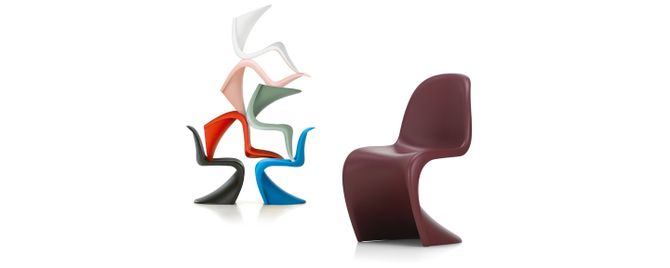
Panton Chair
Verner Panton, 1959/1999
Information
- Back, seat and base: dyed-through polypropylene, 100% recyclable. Matt finish.
- Outdoor use: suitable for utilisation outdoors on a temporary or seasonal basis, following care instructions. After prolonged exposure to the elements, clean and store away in a dry, sheltered place to ensure lasting use and avoid any deterioration in appearance.
10 year manufacturer’s warranty for selected products
Panton Chair
The Panton Chair is a classic in the history of furniture design. Conceived by Verner Panton in 1959, the chair was developed for serial production in collaboration with Vitra (1967). It was the first all-plastic chair made in one piece with a cantilever design. Since its introduction to the market, it has advanced through several production phases. Vitra and Verner Panton worked closely together to develop a new version made of polypropylene, which was launched in 1999. The comfort of this chair results from the combination of a cantilever structure with an anthropomorphic shape and a slightly flexible material. It can be used individually or in groups and is suited for indoor and outdoor environments. The Panton Chair has received numerous international design awards and is represented in the collections of many prominent museums. Due to its expressive form, it has become an icon of the twentieth century.
Verner Panton
Verner Panton was an influential figure in the development of design during the 1960s and ’70s. After moving to Switzerland in the early 1960s, the Danish designer became known for his inventive, novel ideas for furnishings, lighting and textiles. The masterful use of colour was a hallmark of his work.